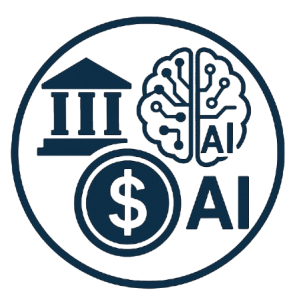What is Gross Domestic Product (GDP)? A Simple Explanation
Understanding the Basics of GDP
Gross Domestic Product (GDP) is a fundamental concept in economics, acting as a vital sign for a nation’s financial health. Simply put, it represents the total monetary or market value of all the finished goods and services produced within a country’s borders in a specific period, typically a year or a quarter. Think of it as a comprehensive scorecard, reflecting the collective economic activity happening within those boundaries. It’s a way of measuring how much “stuff” a country makes – from cars and computers to haircuts and healthcare – and adding it all up to get a single, overall figure. This figure isn’t just some abstract number; it provides crucial insights into whether an economy is growing, shrinking, or stagnating. A rising GDP usually indicates that businesses are thriving, people are employed, and consumers are spending money. Conversely, a declining GDP can signal economic trouble, potentially leading to job losses and reduced consumer spending. The U.S. Bureau of Economic Analysis (BEA) is responsible for calculating and reporting GDP in the United States.
GDP’s importance extends beyond simply tracking economic performance. It serves as a crucial benchmark for policymakers, investors, and businesses. Governments use GDP data to make informed decisions about fiscal and monetary policy, such as adjusting interest rates or implementing stimulus packages, to steer the economy in the desired direction. Investors rely on GDP figures to assess the investment climate in a particular country, helping them decide where to allocate their capital. Businesses use GDP data to forecast demand for their products and services, allowing them to plan production and hiring accordingly. It’s also worth noting that GDP is often used as a basis for international comparisons, allowing economists to assess the relative economic strength of different countries. However, GDP is not a perfect measure, and it has its limitations, which we’ll explore later. To better grasp cultural nuances, see more about Japanese cuisine.
How is GDP Calculated? The Expenditure Approach
There are different methods for calculating GDP, but the most common is the expenditure approach. This approach adds up all the spending on final goods and services within a country. It follows a simple formula: GDP = C + I + G + (X – M). Let’s break down each component of this formula:
- C (Consumption): This represents the spending by households on goods and services. It’s the largest component of GDP in most developed economies. This includes everything from groceries and clothing to entertainment and education. Consumer spending is a major driver of economic growth, as it reflects the demand for goods and services in the economy.
- I (Investment): This includes spending by businesses on capital goods, such as factories, equipment, and software. It also includes residential investment, which is spending on new homes. Investment is crucial for long-term economic growth, as it increases the productive capacity of the economy.
- G (Government Spending): This represents spending by the government on goods and services, such as infrastructure, defense, and education. Government spending can play a significant role in stimulating the economy, especially during recessions.
- (X – M) (Net Exports): This is the difference between a country’s exports (X) and its imports (M). Exports represent goods and services produced domestically and sold to foreign countries, while imports represent goods and services produced in foreign countries and purchased domestically. A positive net export figure (X > M) contributes positively to GDP, while a negative figure (X < M) detracts from GDP.
Each of these components contributes to the overall GDP figure, providing a comprehensive picture of the economic activity happening within a country. This approach is widely used because it is relatively straightforward and provides a clear understanding of the drivers of economic growth.
Nominal vs. Real GDP: Adjusting for Inflation
It’s important to distinguish between nominal GDP and real GDP. Nominal GDP is the value of goods and services measured at current prices. It’s simply the sum of all the spending in the economy, without adjusting for inflation. The problem with nominal GDP is that it can be misleading. If prices are rising rapidly (inflation), nominal GDP can increase even if the actual quantity of goods and services produced remains the same. This can give the false impression that the economy is growing faster than it actually is.
Real GDP, on the other hand, is adjusted for inflation. It measures the value of goods and services using constant prices from a base year. This allows economists to compare GDP figures across different time periods and get a more accurate picture of economic growth. For example, if nominal GDP grew by 5% but inflation was 3%, then real GDP only grew by 2%. Real GDP provides a more accurate reflection of the actual increase in the quantity of goods and services produced. Economists and policymakers generally focus on real GDP when assessing the health of the economy, as it provides a more reliable measure of economic performance. To calculate real GDP, economists use a price index, such as the Consumer Price Index (CPI) or the GDP deflator, to adjust nominal GDP for inflation. This adjustment allows for a more meaningful comparison of GDP figures over time.
Limitations of GDP as a Measure of Economic Well-being
While GDP is a valuable indicator of economic activity, it’s important to recognize its limitations as a measure of overall economic well-being. GDP primarily focuses on the quantity of goods and services produced, without necessarily reflecting the quality of life or the distribution of wealth. For example, GDP doesn’t account for factors such as environmental degradation, income inequality, or the value of unpaid work, such as housework or volunteer activities.
One major limitation is that GDP doesn’t capture the distribution of income. A country with a high GDP could still have significant income inequality, meaning that a large portion of the wealth is concentrated in the hands of a few, while many people struggle to make ends meet. Similarly, GDP doesn’t account for the environmental impact of economic activity. A country could increase its GDP by exploiting natural resources, but this could come at the cost of environmental damage and depletion. Furthermore, GDP doesn’t measure the value of unpaid work, which can contribute significantly to society’s well-being. Things like caring for children or elderly parents are not included in GDP calculations. These limitations have led to the development of alternative measures of economic well-being, such as the Human Development Index (HDI) and the Genuine Progress Indicator (GPI), which attempt to capture a broader range of factors that contribute to quality of life. These alternative measures provide a more holistic view of economic progress and well-being.
GDP: A Key Economic Indicator for Today’s World
In conclusion, Gross Domestic Product (GDP) is a crucial measure of a country’s economic performance. It provides a snapshot of the total value of goods and services produced within a nation’s borders, allowing economists, policymakers, and businesses to assess the health and direction of the economy. While GDP has its limitations, it remains a valuable tool for understanding economic trends and making informed decisions.
By understanding how GDP is calculated and what it represents, individuals can gain a deeper appreciation for the forces that shape their economic lives. From understanding how inflation impacts GDP to learning about the expenditure approach and its components, this information helps in forming a more complete picture of the economy. While it’s important to be aware of GDP’s limitations and consider alternative measures of economic well-being, GDP will likely continue to be a cornerstone of economic analysis for the foreseeable future. Its wide availability and relative ease of calculation make it a readily accessible and widely used indicator across the globe.












